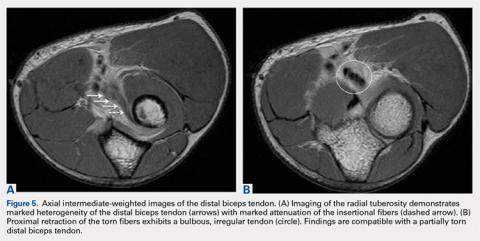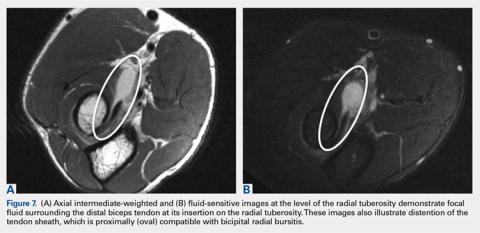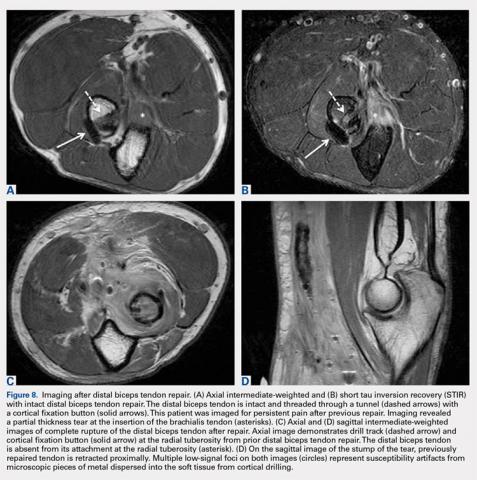Partial distal bicep tears are characterized on MRI by focal or partial detachment of the tendon at the radial tuberosity with fluid filling the site of the tear. The degree of partial tearing can be assessed on MRI (Figures 5A, 5B).
In distal biceps tendinosis, increased signals of thickened tendon fibers at the radial tuberosity are evident without focal discontinuity7,8 (Figures 6A-6C). Patients may display attenuation of the distal tendon fibers or adjacent fluid distension representing bicipitoradial bursitis (Figures 7A, 7B).MRI is useful in assessing the distal biceps tendon in the postoperative setting to evaluate the integrity of a repaired tendon. Cortical fixation button technique for repair creates minimal susceptibility artifacts on MRI. Postoperative MRI typically demonstrates a transverse hole drilled through the proximal radius at the site of the tuberosity with a cortical fixation button flush against the posterior radial cortex (Figures 8A-8D).
The postoperative complication of heterotopic ossification can occasionally be observed on plain radiograph at the site of surgery, but it is less common with the current surgical technique than in the past.11



